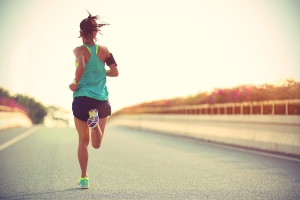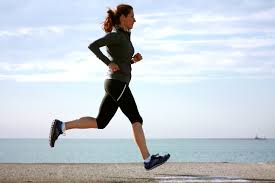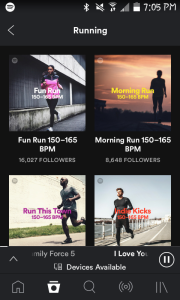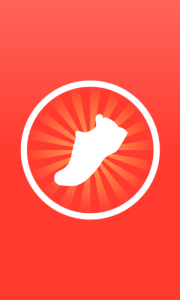I know you guys may or may not be sick of reading about how I’ve been recovering from my hip injury, but as it has been a major part of the last month in my life, and can be such a huge part of any athlete’s life, it is something I think is important to share and talk about. Of course, how I’ve recovered is not going to be exactly the same as how someone else best recovers, and it all depends on the extent and type of injury sustained. Again, I want to stress that I am not 100% sure what kind of injury I did sustain and the extent of the damage as I never went for x-rays or tests, my diagnosis is based on chiropractic care and symptoms reported.
Anyway, today I want to talk about my injury and how I went about recovering.
Overuse cased my injury
As I’ve stated before, I was running every single day and preparing for a half marathon and sometime during that training, I noticed that while running there was a little bit of pain in my left hip. Now, I’m not new to hip pain, and I’ve had on and off trouble with my hips since I was in high school, so I’ve sadly learned to ignore it. And that’s what I did. I stretched a little more and since I was only noticing it with running, I figured it was just a little dysplasia flair up and it would go away in a few days.
It didn’t.
I got through the half marathon pain free but once that was over, the pain hit hard and it wouldn’t go away. Eventually it hurt to stand and move and running was an absolute intolerable pain. I still ran, but eventually I knew I needed to get some help so I called the chiropractor and got myself in to be seen.
Getting Adjusted
I hit up my chiropractor to get adjusted and he noticed right away that my hips weren’t in line with one another. My left leg was sitting significantly longer than my right, putting a strained pressure on my left hip. This was likely causing some tension, pinching, and of course, a ton of inflammation. He adjusted me but reassured me it was going to take awhile for the adjustment to stick and the pain to go away. I was to continue coming in weekly until I was cleared. He also made it very clear that I needed to lay off the running as it was at this point, doing more harm than good. It was too high of impact too often and I needed to fall back to something less hurtful to me, especially if I wanted to avoid long term damage. It was hard to hear, but necessary. So, I cut running out for weeks.
I’m still getting seen for adjustments, one more as I write this since the insurance will pay for it, but over time I did notice less and less pain and the adjustments stuck better each time. I didn’t start running again until I was cleared to and even then, as I’ll discuss later, I was careful about getting back in and am still working up to it. I think the chiropractic care was a huge part in my recovery process.
Cutting back on high impact
When I was told to stop the high impact work, I knew I was going to struggle with my working out. I love running, I love HIIT, I love getting a really good sweat in. But I knew I couldn’t put that kind of pressure on my hip, so I had to change up what I was doing. So what did I do instead? I switch to low intensity training online while also focusing on resistance training (which I did regularly anyway) and instead of focusing on impact, I focused on steady heart rate increase. It was definitely a challenging couple of weeks because it was not the type of workout I was used to, but it was definitely necessary.
More rest and stretching
One of the major things I also did was adding the rest days I wasn’t taking back into my routine. Yupp, I wasn’t taking a single day off and my body was definitely hating me for it and I could tell. (And I was heavily scolded for it by a lot of people). In fact, even my therapist got in on the action and it wasn’t pretty.
I didn’t just pull the bandaid off and stop exercise all together. That wouldn’t be very like me. Instead, I started doing yoga once or twice a week and nothing else (and by yoga I mean deep stretching). In fact, I did A LOT of stretching. I stretched before and after every workout and I made sure I was properly warming up and cooling down after workouts. It was hard for me, but I definitely think it was needed.
Take your rest days guys. Our body really needs them to recuperate from activity!
I took a lot of NSAIDS
At first I didn’t want to rely too heavily on anti-inflammatory drugs but after the first few days of no improvement I knew the inflammation wasn’t going to go away on its own. I had to take something to help out. So, I started taking Ibuprofen twice a day and using on over the counter NSAID gel twice a day as well. I needed the help and I just had to be smart about how often and how much I was taking. I think medication sometimes gets a bad rep, but often times it can be very benificial.
I slowly worked back in
When I was finally feel decently ready, I slowly started working low impact, more intense exercise back into routine. AKA I started on the elliptical first and crawled before I could walk. After a week of that I started to run again, starting with a mile and slowly working back into longer runs, not pushing speed or distance at any point. I started on the treadmill and track where impact would be less and stayed there until I was feeling no pain at all. It was very important that I kept to a routine that wasn’t going to put me back where we started so I made sure to give myself plenty of rest between runs and continue to stretch. If I ever felt a need to hold back, I listened to my body and pulled back. I didn’t push to hard to fast as much as I wanted to.
I’m still working on healing, but I feel the light at the end of the tunnel. There’s hope yet!
Have you guys ever had a serious injury? How long did it take you to recover and what tips do you have? Let me know in the comments below!
Until next time,
Kat





 One month of training is not enough time to work up to running a half marathon, especially if this is your first one and you don’t usually run distance! I took months of training. Each week I increased my mileage by ½ to 1 mile before I reached 10 or 11 miles, then I went for the full 13.1 miles! It’s important to not go at it all at once of your body will tire out and you won’t learn where your breaking points are.
One month of training is not enough time to work up to running a half marathon, especially if this is your first one and you don’t usually run distance! I took months of training. Each week I increased my mileage by ½ to 1 mile before I reached 10 or 11 miles, then I went for the full 13.1 miles! It’s important to not go at it all at once of your body will tire out and you won’t learn where your breaking points are. What do I use? Personally, after trying a few things, I like “Carb Boom” because it isn’t too rough on my stomach (Yes, gels can be very tough on the stomach. I almost threw up the first time). But I would definitely stress the importance of trying out different ones before you race to see what you like the best and what your stomach tolerates. You don’t want to gel for the first time during the actual race and find that you need to move aside to throw up or just feel too sick to run. I also suggest timing your gel with a water station because water helps them go down a lot.
What do I use? Personally, after trying a few things, I like “Carb Boom” because it isn’t too rough on my stomach (Yes, gels can be very tough on the stomach. I almost threw up the first time). But I would definitely stress the importance of trying out different ones before you race to see what you like the best and what your stomach tolerates. You don’t want to gel for the first time during the actual race and find that you need to move aside to throw up or just feel too sick to run. I also suggest timing your gel with a water station because water helps them go down a lot. First, let’s talk about the three different types of workouts you might be doing.
First, let’s talk about the three different types of workouts you might be doing. Although not greatly studied, there may be some pros to sleeping after exercise. The most important being that sleep allows the body time to repair and grow muscle tissue. This is true whether you are strength training, working on flexibility, or doing cardio. Your muscles always need time to repair after a workout. Exercise in general can also make you feel tired which helps promote sleep.
Although not greatly studied, there may be some pros to sleeping after exercise. The most important being that sleep allows the body time to repair and grow muscle tissue. This is true whether you are strength training, working on flexibility, or doing cardio. Your muscles always need time to repair after a workout. Exercise in general can also make you feel tired which helps promote sleep. After doing a lot of research outside of what the doctor gave to me regarding ETAP, it seemed like a lot of people seemed to think that their symptoms were linked with irritable bowel or constipation. It seemed to make a lot of sense to me and tracking my own running history, it seemed like a logical explanation.
After doing a lot of research outside of what the doctor gave to me regarding ETAP, it seemed like a lot of people seemed to think that their symptoms were linked with irritable bowel or constipation. It seemed to make a lot of sense to me and tracking my own running history, it seemed like a logical explanation. Breathing
Breathing I started wearing a compression belt around my abdominal almost immediately after my doctor explained ETAP to me. It was one of the most highly recommended things to help combat the symptoms. Not only does it compress the abdomen to help alleviate the cramping, but it also helps to fix posture!
I started wearing a compression belt around my abdominal almost immediately after my doctor explained ETAP to me. It was one of the most highly recommended things to help combat the symptoms. Not only does it compress the abdomen to help alleviate the cramping, but it also helps to fix posture! Because I am always trying to change up what I’m listening to, I find that Spotify is the perfect place for me to keep my music collection for when I’m running. I can make different playlists for the different types of runs I am going on or I can just play random band radios so I don’t know what exact songs will be coming on so I won’t be bored with them. And it’s a really easy app to navigate. Spotify also breaks down music by activities. So you can find a playlist created for running or you can create your own.
Because I am always trying to change up what I’m listening to, I find that Spotify is the perfect place for me to keep my music collection for when I’m running. I can make different playlists for the different types of runs I am going on or I can just play random band radios so I don’t know what exact songs will be coming on so I won’t be bored with them. And it’s a really easy app to navigate. Spotify also breaks down music by activities. So you can find a playlist created for running or you can create your own. I originally started using a couch to 5k app just to see how far I could get myself to go, never really expecting to actually get up to the 5k level. Give it a few months and there I was, able to run a slow, but steady 5k. These apps really work.
I originally started using a couch to 5k app just to see how far I could get myself to go, never really expecting to actually get up to the 5k level. Give it a few months and there I was, able to run a slow, but steady 5k. These apps really work. There are hundreds of these out there and everyone has a preference for which one they like to use (personally, I used Runmeter, which was free), but a run tracking app is the most important thing for a runner to have on their phone, especially if they are training for a race.
There are hundreds of these out there and everyone has a preference for which one they like to use (personally, I used Runmeter, which was free), but a run tracking app is the most important thing for a runner to have on their phone, especially if they are training for a race.